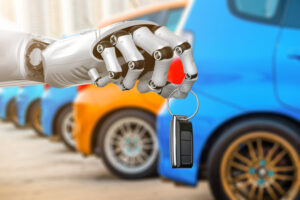 By Jim Anderson
By Jim Anderson
Autonomous vehicles (AVs): What are the effects on today’s transportation network and future smart-city design? There is much speculation and opinion as to the evolution of AVs and the continued emergence of transportation network company (TNC) use in the fabric of the urban transportation environment.
Notable architect and planner with architectural firm HOK, Brian Jencek was recently interviewed by Automotive World, and stated, “The hope is that public and private partnerships will flourish to support municipal transport systems. If managed properly, AVs could improve social equity and lead us into a more just future.”
What we know today is that AVs will be driven by artificial intelligence (AI). supported exclusively by advanced connectivity and data-driven cloud infrastructure. The automotive industry is investing heavily in alternative energy and technology for the future of mobilization. The consumer adoption and acceptance will be predicated upon a safe, predictable, secure, and efficient experience.
Jencek observes, “In the future, these (AV) fleets will need somewhere to go” as they complete their delivery service. This is a topic for today’s city planners to consider–places for AV’s to re-charge and await the next transportation opportunity. The TNCs are currently a factor in emerging urban congestion as they drive about awaiting their next fare.
As we are at the cusp of this technological revolution, stay tuned for continued awareness of AI advancements in data-center infrastructure to support the necessary computer power for AV success. See excerpts from the Automotive World article here.
Jim Anderson is market development manager, building solutions team, with MasterBuilder Solutions and co-chair of IPMI’s Planning, Design, & Construction Committee.
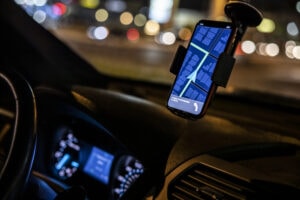 Transportation network company (TNC) drivers in Miami say they fear losing their income when 1,000 autonomous cars are launched as ride-hails later this year.
Transportation network company (TNC) drivers in Miami say they fear losing their income when 1,000 autonomous cars are launched as ride-hails later this year.
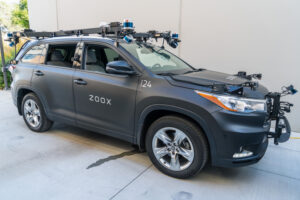 The race to build driverless vehicles is expensive, slow, and fraught with metaphorical–and real–potholes. So why are so many big tech companies jumping in?
The race to build driverless vehicles is expensive, slow, and fraught with metaphorical–and real–potholes. So why are so many big tech companies jumping in? By Jim Anderson
By Jim Anderson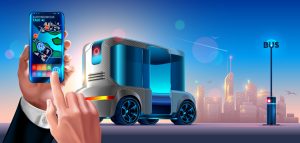 It wasn’t so long ago that autonomous buses and shuttles felt like part of the near-term future. But delays in technology and COVID-19 have put the brakes on that prediction, and now
It wasn’t so long ago that autonomous buses and shuttles felt like part of the near-term future. But delays in technology and COVID-19 have put the brakes on that prediction, and now  Michigan Governor Gretchen Whitmer yesterday announced the establishment of dedicated lanes for autonomous vehicles (AVs) on a 40-mile stretch of highway between Detroit and Ann Arbor. The lanes will be built thanks to a private-public partnership (P3) and construction is expected to begin after a two-year study to determine the best strategy.
Michigan Governor Gretchen Whitmer yesterday announced the establishment of dedicated lanes for autonomous vehicles (AVs) on a 40-mile stretch of highway between Detroit and Ann Arbor. The lanes will be built thanks to a private-public partnership (P3) and construction is expected to begin after a two-year study to determine the best strategy. By some estimates, we should have been relaxing in our autonomous cars by now. But that dream keeps getting pushed back, and Fast Company says they know why: Basic human nature.
By some estimates, we should have been relaxing in our autonomous cars by now. But that dream keeps getting pushed back, and Fast Company says they know why: Basic human nature.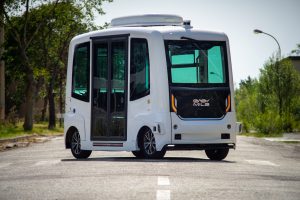 Twelve-passenger, driverless buses will hit real roads in Gainesville, Fla., later this year, marking the first time autonomous shuttles travel among other traffic in the U.S.
Twelve-passenger, driverless buses will hit real roads in Gainesville, Fla., later this year, marking the first time autonomous shuttles travel among other traffic in the U.S. Fleets of self-driving vehicles are about to become the norm. What does that mean for the parking and mobility industry? We’ll give you a hint: They’re driverless. Autonomous vehicles will change the fundamentals of the entire transportation landscape, and that includes fleets–and the way they interact with parking and mobility facilities and infrastructure.
Fleets of self-driving vehicles are about to become the norm. What does that mean for the parking and mobility industry? We’ll give you a hint: They’re driverless. Autonomous vehicles will change the fundamentals of the entire transportation landscape, and that includes fleets–and the way they interact with parking and mobility facilities and infrastructure. Driverless shuttles are on the road in Reston, Va., a suburb of Washington, D.C., and while things are going pretty well so far, the pilot has also highlighted why driverless cars may still be some time away.
Driverless shuttles are on the road in Reston, Va., a suburb of Washington, D.C., and while things are going pretty well so far, the pilot has also highlighted why driverless cars may still be some time away.